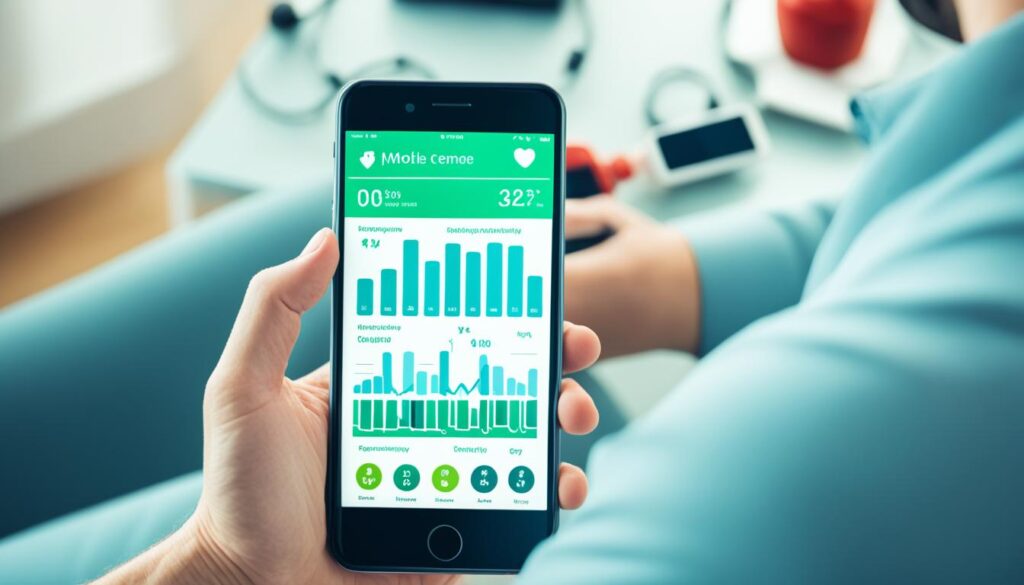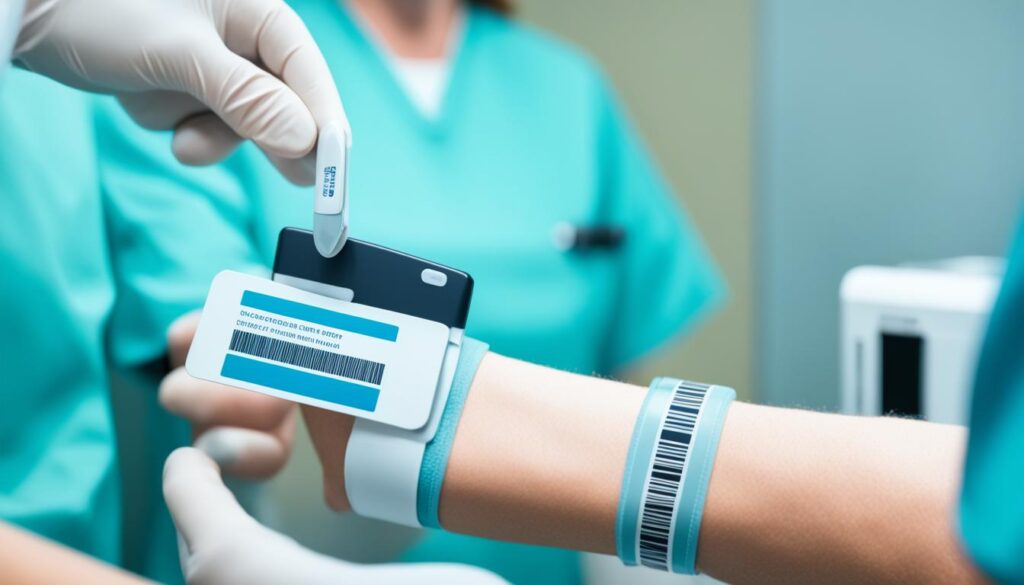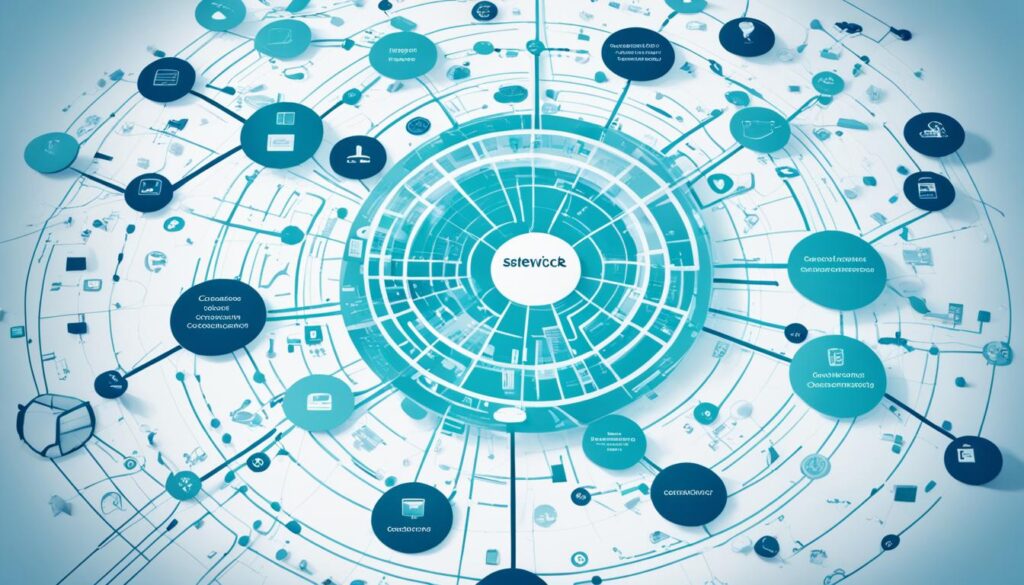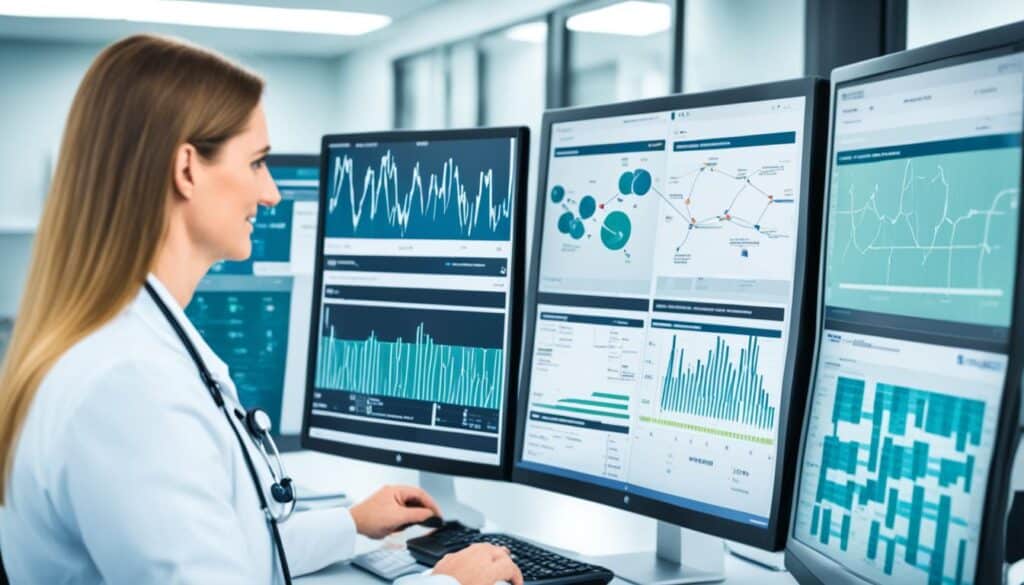Health Information Technology (HIT) has been a key focus in the healthcare industry, with the goal of improving the quality, safety, and efficiency of patient care. The federal government launched the HIT initiative in 2004, with four overarching national priorities: providing clinicians with information tools like electronic health records (EHRs) for patient care, connecting health information to follow patients across care settings, supporting consumers with information to manage their care, and advancing data-intensive activities like public health and clinical trials.
Key Takeaways
- The federal government initiated the HIT program in 2004 to improve healthcare quality, safety, and efficiency.
- HIT aims to equip clinicians with tools like EHRs, connect patient information across care settings, empower consumers, and advance data-driven activities.
- Achieving interoperability and realizing the full benefits of HIT remains a significant challenge in the healthcare industry.
- The healthcare industry is focused on overcoming barriers to interoperability, such as fragmented systems and lack of standardized data formats.
- Establishing robust data standards and improving patient identification are crucial steps towards achieving interoperability at scale.
Introduction to Health Information Technology
Health Information Technology (HIT) encompasses the electronic systems and digital tools used to manage, store, and share patient health information. HIT plays a critical role in healthcare by enabling efficient data management, improving clinical decision-making, enhancing care coordination, and supporting population health initiatives. Electronic Health Records (EHRs), clinical decision support systems, telehealth applications, and health information exchanges are some key examples of HIT.
Understanding the Role of HIT in Healthcare
HIT enables the seamless exchange of health information across different care settings, improving the quality, safety, and efficiency of patient care. By providing clinicians with timely access to comprehensive patient data and clinical decision support tools, HIT can enhance the overall quality of care and patient safety.
Key Objectives of Health Information Technology
The key objectives of HIT include:
- Improving quality of care and patient safety by providing clinicians with timely access to comprehensive patient data and clinical decision support tools.
- Enhancing care coordination by enabling the seamless exchange of health information across different care settings.
- Increasing healthcare efficiency and reducing costs by automating administrative tasks, minimizing duplicate testing, and optimizing resource utilization.
- Empowering patients to actively engage in their care through tools like patient portals and mobile health apps.
- Advancing public health surveillance, disease monitoring, and emergency preparedness through the collection and aggregation of electronic health data.
- Accelerating clinical research and the development of precision medicine by leveraging the wealth of data generated through HIT systems.
Challenges in Implementing Interoperability
Despite the significant potential of HIT, achieving true interoperability remains a major challenge. Barriers include:
- Fragmented health IT systems and lack of standardized data formats
- Financial disincentives and competing business interests among healthcare organizations
- Complexities around patient privacy and data governance regulations
- Limited infrastructure and resources to support robust data exchange
- Insufficient HIT workforce with the necessary skills and expertise
Overcoming these challenges requires a coordinated, multi-stakeholder effort to establish the technical, organizational, and policy-level foundations for seamless data sharing and integration across the healthcare ecosystem.
Data Standards and Achieving Interoperability at Scale
Establishing robust data standards is a crucial first step towards achieving interoperability at scale. Standardized data formats, terminologies, and protocols enable the consistent and accurate exchange of clinical, administrative, and financial information between different HIT systems. Key data standards initiatives include:
- HL7 FHIR (Fast Healthcare Interoperability Resources): A modern, standards-based framework for seamless data exchange
- SNOMED CT (Systematized Nomenclature of Medicine – Clinical Terms): A comprehensive clinical terminology system
- ICD-10 (International Classification of Diseases, Tenth Revision): A diagnostic coding system for classifying diseases and health conditions
- LOINC (Logical Observation Identifiers Names and Codes): A universal standard for identifying medical laboratory observations
Patient Identification and Matching
Accurately identifying and matching patients across disparate HIT systems is a critical challenge for interoperability. Relying solely on demographic information like name and date of birth often leads to errors and duplicate records. Potential solutions include:
- Implementing a voluntary national patient identifier or health care identifier, similar to the TSA Pre-Check program
- Leveraging advanced patient matching algorithms that incorporate additional data points, such as biometrics, to improve accuracy
- Developing a national provider directory to facilitate the electronic exchange of health information among clinicians and healthcare facilities
Provider Directory for Data Exchange
The lack of a comprehensive national provider directory that contains the electronic addresses of clinicians and healthcare organizations hinders the efficient exchange of electronic health data. Potential approaches to address this include:
- The Centers for Medicare & Medicaid Services (CMS) hosting a national provider directory, building upon the existing National Provider Identifier (NPI) database
- Establishing standardized protocols and data formats for provider directory information to facilitate seamless integration and updates
- Incentivizing healthcare organizations to maintain accurate and up-to-date provider directory information to support reliable data exchange
Interoperability with Consumer Health Technology

Integrating consumer-facing health technologies, such as mobile apps, with clinical HIT systems can empower patients to become more actively involved in their care. Key aspects include:
- Enabling patients to access their health records, communicate with providers, and track their health metrics through secure mobile applications
- Leveraging smartphone sensors and wearable devices to capture real-time patient-generated health data and integrate it with EHRs
- Developing apps that provide personalized health recommendations, medication management support, and care coordination functionalities
Patient Portals and Personal Health Records
Patient portals and personal health records (PHRs) are another important aspect of consumer-oriented HIT. These tools allow patients to access their health information, communicate with their healthcare team, and manage their care. Challenges in driving widespread adoption and utilization of these platforms include:
- Ensuring seamless interoperability between patient portals/PHRs and clinical HIT systems to enable comprehensive data access and exchange
- Enhancing the functionality and user-friendliness of these tools to meet the diverse needs and preferences of patients
- Addressing barriers related to health literacy, digital access, and patient engagement to ensure equitable access to these technologies
Improving Patient Identification and Matching

Accurately identifying and matching patients across different healthcare organizations and HIT systems is a significant challenge that hinders interoperability. Common issues include:
- Reliance on demographic information like name and date of birth, which can lead to errors and duplicate records due to inconsistencies or variations
- Lack of a universal patient identifier or health care identifier to uniquely distinguish individuals across the healthcare system
- Complexities in reconciling patient records from different sources, especially for patients with common names or who have changed personal information over time
Potential Solutions for Accurate Matching
Addressing the patient identification challenge requires a multi-faceted approach, including:
- Exploring the feasibility of implementing a voluntary national patient identifier or health care identifier, similar to the TSA Pre-Check program, to enable accurate patient matching
- Developing advanced patient matching algorithms that incorporate additional data points, such as biometrics, to improve the accuracy of patient identification
- Establishing standardized protocols and best practices for patient data collection and maintenance to ensure data quality and consistency across healthcare organizations
Service-Oriented Architectures and Web-Based Services

Service-Oriented Architecture (SOA) is an architectural style that can facilitate interoperability by enabling the modular, loosely coupled integration of different HIT systems and applications. Key benefits of SOA include:
- Allowing healthcare organizations to expose specific functionalities or “services” that can be easily accessed and integrated by other systems
- Enabling the development of interoperable applications that can seamlessly access and exchange data from various sources
- Facilitating the reuse of existing IT assets and the development of new, innovative solutions that build upon a common set of services
Leveraging SOA for Interoperability
The use of web-based services and application programming interfaces (APIs) is a crucial aspect of SOA-based interoperability in healthcare. Initiatives like the Fast Healthcare Interoperability Resources (FHIR) standard provide a modern, standards-based framework for the secure and seamless exchange of health data through web-based APIs. Benefits include:
- Enabling the development of “plug-and-play” applications that can easily integrate with EHRs and other HIT systems
- Allowing for the aggregation and analysis of data from multiple sources to support clinical decision-making, public health surveillance, and research
- Empowering consumers to access and manage their health information through a variety of mobile apps and web-based tools
Enfranchising Vulnerable Populations and Chronic Disease Management

Leveraging Health Information Technology (HIT) can play a vital role in addressing health disparities and improving access to care for vulnerable populations. Key strategies include deploying telehealth and remote monitoring technologies to overcome geographical barriers and provide care to underserved communities, designing user-friendly consumer health technologies and ensuring digital literacy support to enhance engagement among disadvantaged groups, and utilizing data analytics to identify high-risk populations, target interventions, and monitor the impact on health outcomes for marginalized communities.
HIT can significantly enhance the management of chronic diseases by enabling coordinated, team-based care. Strategies include integrating Electronic Health Records (EHRs), clinical decision support systems, and care management tools to provide a comprehensive view of patient health status and guide evidence-based treatment decisions, leveraging remote patient monitoring technologies to capture real-time data on disease progression and medication adherence, allowing for proactive interventions, and facilitating the seamless exchange of information among primary care providers, specialists, and community-based organizations to ensure continuity of care and address social determinants of health.
Health Information Technology and Public Health

HIT can significantly enhance public health surveillance and monitoring efforts by providing access to real-time, comprehensive health data. Key applications include:
- Aggregating data from EHRs, disease registries, and other HIT systems to detect and track the spread of infectious diseases, chronic conditions, and emerging health threats
- Leveraging advanced analytics and predictive modeling to identify trends, monitor population health, and guide the allocation of public health resources
- Facilitating the timely exchange of information between healthcare providers, public health agencies, and emergency response teams to coordinate effective interventions
Emergency Response and Preparedness
HIT can play a critical role in enhancing emergency response and disaster preparedness efforts by:
- Providing access to real-time patient data and medical histories to support clinical decision-making during crises
- Enabling the rapid exchange of information among healthcare facilities, emergency responders, and public health authorities to coordinate triage, resource allocation, and evacuation efforts
- Facilitating the collection and analysis of data related to the impact of emergencies and disasters, informing future preparedness and mitigation strategies
Accelerating Research with Aggregated Health Data

The availability of large, high-quality datasets through Health Information Technology (HIT) can significantly accelerate clinical research and the development of precision medicine. HIT-enabled data aggregation and analysis present numerous applications that are transforming the healthcare research landscape.
Clinical Trials and Precision Medicine
HIT systems, such as Electronic Health Records (EHRs) and patient-generated health data, provide a rich source of information that can be leveraged to streamline clinical trials and advance precision medicine initiatives. Researchers can utilize these datasets to:
- Identify potential study participants with specific clinical characteristics, genomic profiles, or treatment histories
- Monitor treatment outcomes and detect adverse events in real-time, enabling more efficient and effective clinical trial management
- Analyze the combined impact of genetic, clinical, and lifestyle factors to stratify patient populations and develop targeted therapies tailored to individual needs
Real-World Evidence and Observational Studies
The integration of disparate data sources, such as EHRs, claims data, and disease registries, through HIT can support the generation of valuable real-world evidence (RWE) and the conduct of observational studies. These approaches offer several benefits:
- Gaining a deeper understanding of the actual use, effectiveness, and safety of medical interventions in diverse patient populations
- Identifying patterns, trends, and associations that can inform clinical decision-making, regulatory approval processes, and healthcare policy
- Accelerating the translation of research findings into practical applications that improve patient outcomes and population health
Building a Health Information Technology Workforce

Developing a skilled HIT workforce is crucial to supporting the effective implementation and utilization of health information technologies. Key strategies include:
- Expanding educational programs, such as health informatics and information management degrees, to train the next generation of HIT professionals
- Providing ongoing training and professional development opportunities for healthcare staff to enhance their competencies in areas like data analytics, cybersecurity, and user-centered design
- Collaborating with academic institutions and industry partners to ensure that HIT curriculum and training programs align with the evolving needs of the healthcare sector
Skill Development and Competencies
HIT professionals require a diverse set of skills and competencies, including:
- Clinical and healthcare domain knowledge to understand the unique needs and workflows of the healthcare industry
- Proficiency in data management, analytics, and visualization to derive meaningful insights from health data
- Expertise in health information standards, interoperability, and systems integration to facilitate seamless data exchange
- User-centered design and change management skills to ensure the effective implementation and adoption of HIT solutions
- Cybersecurity and privacy expertise to protect sensitive health information and maintain compliance with regulatory requirements
Privacy, Security, and Trust in Health IT Systems

The increased reliance on Health Information Technology (HIT) systems and the growing volume of electronic health data have heightened the risk of cybersecurity threats, such as data breaches, ransomware attacks, and unauthorized access. Mitigating these risks requires a multifaceted approach that combines robust security controls, comprehensive incident response planning, and ongoing security awareness training for healthcare staff.
Cybersecurity Threats and Mitigation
Healthcare organizations must implement a range of security measures to protect their HIT infrastructure and sensitive patient data. This includes leveraging encryption, access management controls, and intrusion detection systems to safeguard against unauthorized access and data breaches. Additionally, developing comprehensive incident response and disaster recovery plans is crucial to ensuring the continuity of healthcare operations in the event of a successful cyber attack.
Providing ongoing security awareness training and education for healthcare staff is also essential. By enhancing the ability of employees to identify and respond to potential threats, organizations can significantly reduce the risk of successful cyberattacks that leverage human vulnerabilities, such as phishing scams or insider threats.
Ensuring Patient Privacy and Consent
Maintaining patient privacy and obtaining appropriate consent for the use of health data are critical considerations in the HIT landscape. Healthcare organizations must adhere to regulations like the Health Insurance Portability and Accountability Act (HIPAA) to safeguard the confidentiality and integrity of protected health information.
Beyond regulatory compliance, healthcare providers should develop clear policies and protocols for obtaining patient consent for the collection, use, and sharing of their personal health data. Empowering patients with tools and transparency to understand how their information is being used and to exercise control over its access and utilization is essential for building trust and fostering patient engagement with HIT systems.
For prospective students seeking program information on a college’s accreditation for associate degrees, it’s essential to explore the program’s accreditation status. Ensuring that a college’s accreditation aligns with industry standards can significantly impact future employability and opportunities. Individuals can inquire about the college’s accreditation status by contacting relevant authorities or sending an email at [email protected]. Understanding how accreditation relates to the quality of education provided and its implications for employment prospects is crucial when making informed decisions about educational pursuits.
Also Read: The Health Benefits Of Regular Exercise: From Heart Health To Mental Well-being
Conclusion
Health Information Technology (HIT) has the potential to revolutionize the healthcare industry by enhancing the quality, safety, and efficiency of patient care. However, the quest for true interoperability and the realization of HIT’s full benefits remains a significant challenge that requires a collaborative, multi-stakeholder approach.
Establishing robust data standards, addressing patient identification and matching issues, and leveraging service-oriented architectures and web-based services are crucial steps towards achieving seamless data exchange and integration across the healthcare ecosystem. Empowering vulnerable populations and improving coordinated care for chronic conditions can further amplify the impact of HIT, while harnessing the power of aggregated health data can accelerate clinical research and the development of precision medicine.
Building a skilled HIT workforce and ensuring the privacy, security, and trustworthiness of HIT systems are equally essential to sustaining the long-term benefits of these transformative technologies. By addressing these multifaceted challenges, the healthcare industry can unlock the full potential of HIT and deliver on the promise of improved patient outcomes, enhanced operational efficiency, and a more connected, data-driven healthcare system.
FAQs
Q: What is health information technology interoperability?
A: Health information technology interoperability refers to the ability of different information systems, devices, or applications to connect, communicate, and exchange data in a coordinated manner within and across organizational boundaries.
Q: How does interoperability benefit patient care?
A: Interoperability in health information technology enables healthcare providers to access complete and accurate patient information when making clinical decisions, leading to improved care coordination, patient safety, and quality of care.
Q: What is the importance of connecting systems in healthcare?
A: Connecting systems in healthcare through interoperability enhances efficiency, reduces duplication of efforts, minimizes errors, and ensures that healthcare professionals have access to the most up-to-date and relevant information about patients.
Q: What role does accreditation play in health information technology programs?
A: Accreditation ensures that health information technology programs meet established quality standards and adequately prepare students for careers in the field. Accreditation by recognized bodies such as the Commission on Accreditation for Health Informatics and Information Management Education (CAHIIM) is important for program credibility and student success.
Q: How can I pursue a career in health information technology?
A: To pursue a career in health information technology, you can enroll in a program that offers a degree in health information technology, such as an associate degree. It is also beneficial to obtain certification, such as becoming a Registered Health Information Technician (RHIT) through the American Health Information Management Association.
Q: What are some steps I can take to apply for a health information technology program?
A: To apply for a health information technology program, you can start by researching accredited programs, reviewing admission requirements, submitting an application either online or by email, providing necessary documentation, such as transcripts, and preparing for any required interviews or assessments.
Q: How can I explore employment opportunities in health information technology?
A: You can explore employment opportunities in health information technology by researching job postings from healthcare organizations, attending career fairs or networking events, reaching out to professionals in the field, and utilizing resources provided by associations like AHIMA.
Source Links
- https://www.healthit.gov/topic/interoperability
- https://www.ncbi.nlm.nih.gov/pmc/articles/PMC9875417/
- https://www.ncbi.nlm.nih.gov/books/n/nap27124/ch16/




